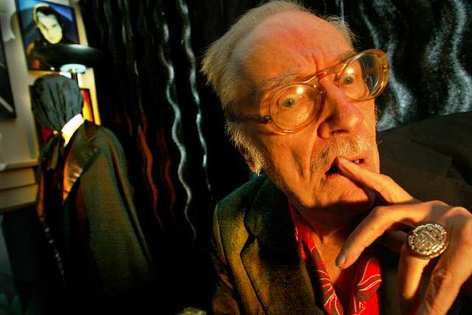When I came home last night my place had no power because a fuse had blown. I waited til this morning to be able to find the fusebox in daylight. Here’s as far as I got with yesterday’s Pixel Scroll, which in Wikipedia parlance is more of a Pixel Stub..
(1) Greg Machlin has finalized the File 770 meetup location at Sasquan.
The Worldcon File770 meetup, Thursday, Aug. 20, at 530 PM, will be at SARANAC PUBLIC HOUSE, 21 West Main Avenue, a very short (2 block) walk from the Convention Center.
They have food, drink, vegan and vegetarian food, and affordable prices:
SO MANY OPPORTUNITIES FOR FUN with that prior sentence, people. DO NOT DISAPPOINT.
They know to expect at least 25, and not to expect us all at once. There’s a bar, so milling is a definite possibility.
Morris Keesan made an interesting discovery:
… and on the Google map, it appears to be next door to the Justice League.
(2) Courtesy of Geekcrafts, socks to wear on your next Trek.
Linda Jo Park, of BeadKnitter Patterns, has created some out-of-this-world socks in honor of Captain Picard from Star Trek. You can find her pattern here.
She also suggests that the pattern could be easily adapted to reference other characters:
There’s no reason why a person couldn’t do them in Captain Kirk gold, Spock blue (you get two choices there), or even Deanna Trois lavender. Or perhaps you’d rather have Gorn green.
(3) Footage of Mark Twain shot by Thomas Edison in 1909, from Mental Floss.
Edison and Twain were close friends. In 1909, Edison visited Twain’s estate in Redding, CT and filmed the famous author. The silent footage is the only known recording of Twain in existence. It first appeared in a 1909 production of Twain’s “The Prince and Pauper,” and it shows Twain wearing his trademark white suit, puffing a cigar. Twain would die one year later.
(4) Sarah A. Hoyt is warming up for Sad Puppies 4 in “It’s All About the Bling”.
When we set out on this, back in the dim days of our first discussions of Sad Puppies (I object, of course. I have cats) the goal was to make the Hugo worth something again. Granted, we can’t cater for everyone’s taste. If you’re a heavy mil-sf guy and the prize goes to hard sci fi it won’t be to your taste. BUT to cater to the “literary” crowd is to cater to the tiniest fandom in SF. (I found this out in sincere arguments with agents while looking for one between my third and fourth. They all wanted me to write literary sf — because I CAN do it — because it would win awards and increase THEIR prestige (and make me slit my wrists in a warm bath if I had to write much more of it. It was no fun.) But they all candidly informed me that it sold almost nothing and so I should try to get a job teaching or write for literary journals or something. Why do you think they kept telling us that Ancillary Justice as a “fun space opera” — because no one buys “literary”. Or yeah, some people do, but not enough to keep you in writer kibble.
Our idea, goofy as it sounds was to get some good books/good names associated with the Hugo, so Hugo would mean a boost in print run again.
[Thanks to Will R., Michael J. Walsh and John King Tarpinian for some of these stories. Title credit goes to File 770 contributing editor of yesterday Will R.]




